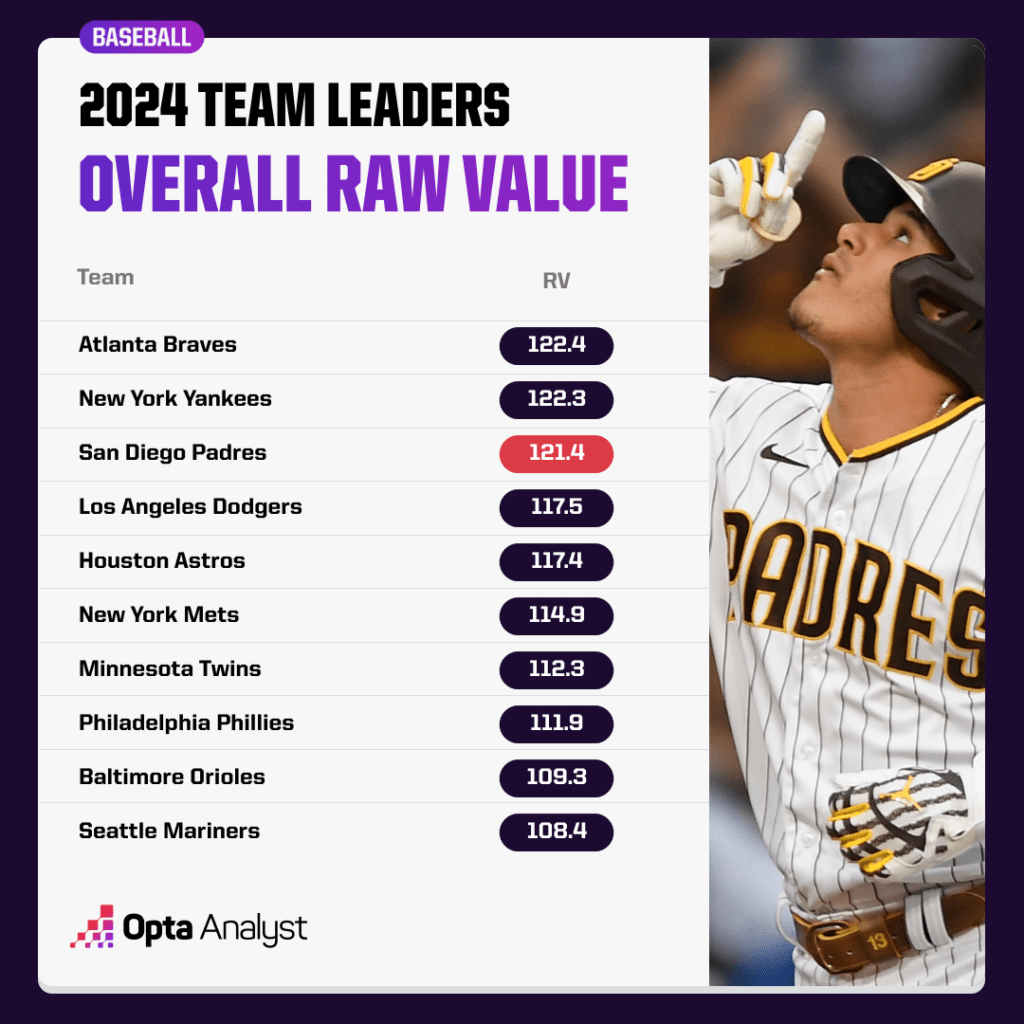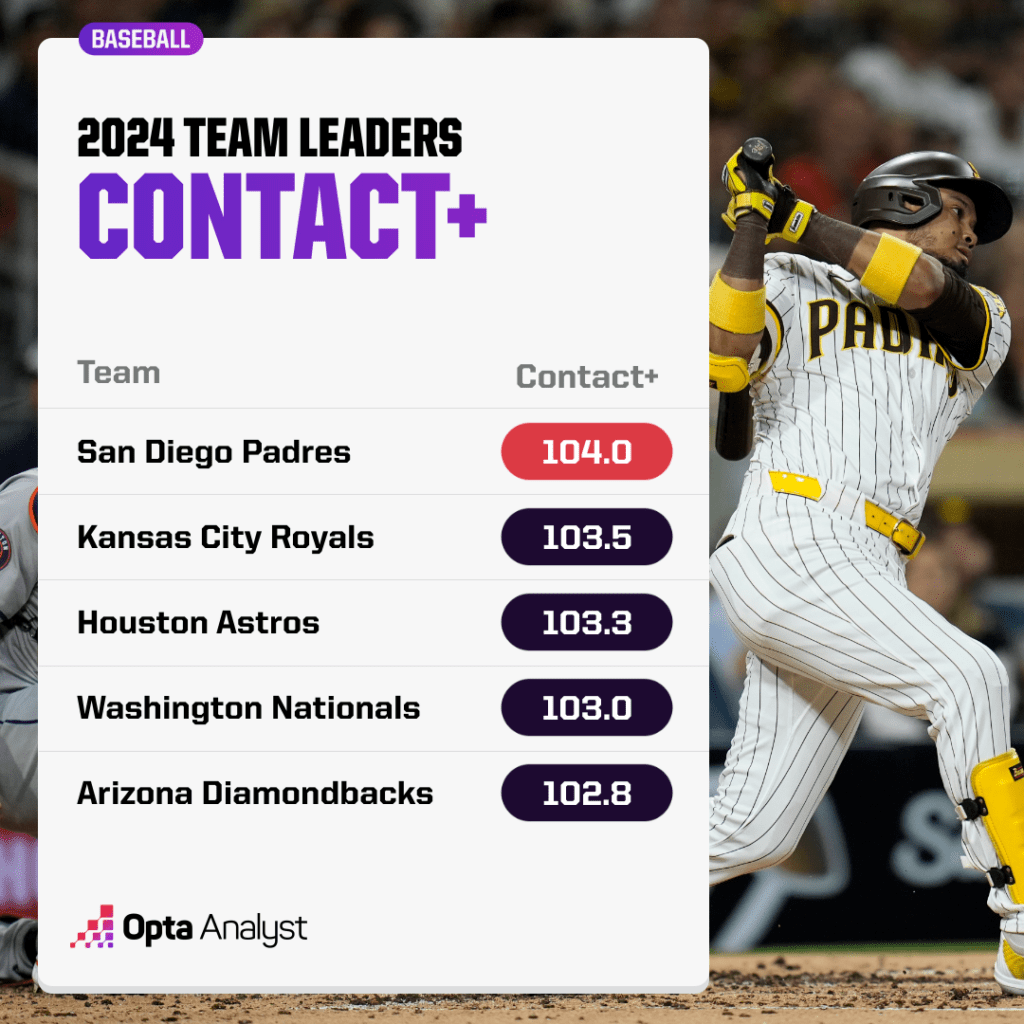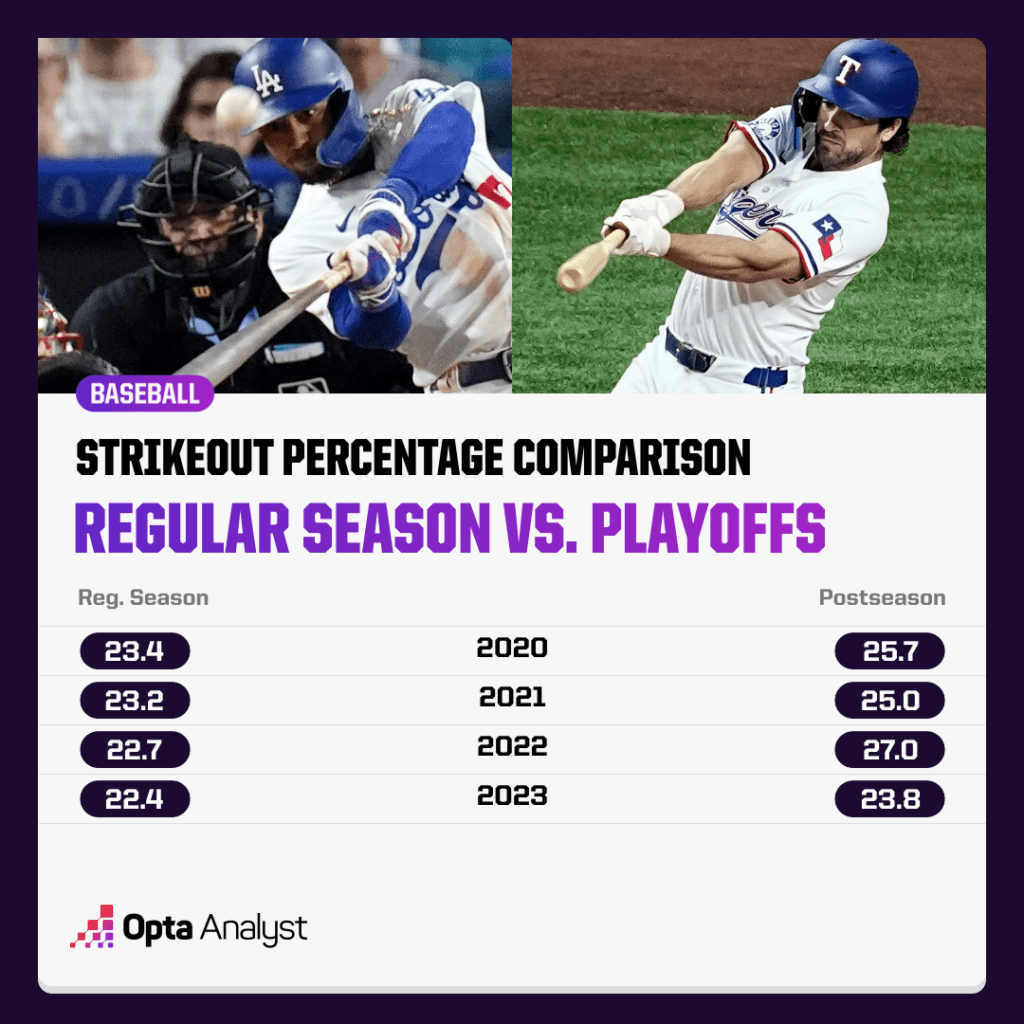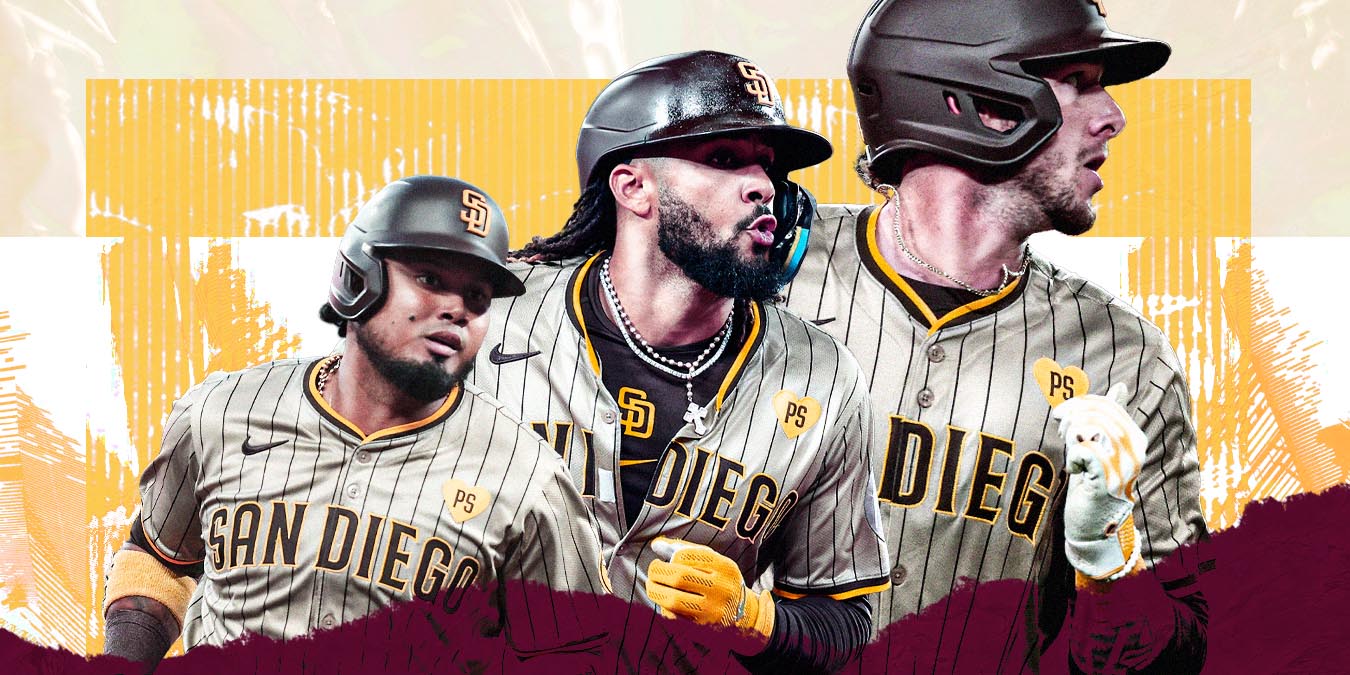According to our projection model, the Padres have the sixth-highest probability of winning the World Series. But that doesn’t mean they won’t give heavier favorites fits along the way.
The Padres, you might have noticed, are playing good baseball.
They went 16-8 in September, but their sample size of stellar baseball is slightly larger. The Padres’ 43-20 record in the second half was easily the best in baseball. That’s two-and-a-half months of playing at a 111-win clip, which is pretty darn impressive.
And it’s quite the turnaround from their low point this year — the club was 37-40 after a walk-off road loss to the Philadelphia Phillies on June 18, and behind teams like the Washington Nationals, St. Louis Cardinals and San Francisco Giants in the wild-card standings — to their status now, as one of the sneaky-good bets to make a deep run into the MLB postseason.
According to our projection model, the Padres have the sixth-highest probability of winning the World Series at 5.6%. But that doesn’t mean they won’t give heavier favorites fits on the way out, especially considering how they’ve played on the road.
When asked about his team’s success away from home — the Padres went 48-33 on the road this season — manager Mike Shildt said it’s about consistency.
“We try to play the game of baseball the right way, regardless of where we’re playing, who we’re playing, whether it’s hot or cold, day or night game,” he told Opta Analyst. “We want to show up prepared, enjoy it and go compete.”
That’s an overly simple viewpoint, but he’s not wrong. The Padres rank third in the majors in overall raw value, which measures contact, plate discipline and damage done upon contact with the league average being 100.

In addition to that consistency, the Padres have been pretty elite in several factors that often lead to October success. There is no one guaranteed way to win in October, and that’s part of the fun. But these Padres have a lot in common with teams that have brought home the World Series trophy recently.
For starters, their rotation is healthy and stellar. Dylan Cease had a 2.46 in his last 14 starts, including a no-hitter. Michael King had a 1.83 ERA in his last eight starts, and a 2.95 ERA for the season. Joe Musgrove and Yu Darvish missed time with injuries, but they’re back and throwing well. Musgrove had a 2.15 ERA in his nine starts off the IL and Darvish had a 2.78 ERA in his final four starts of the season.
At the plate, San Diego’s ability to make contact is key to the club’s success, too. The Padres lead baseball with a contact+ of 104.0, ahead of the Kansas City Royals (103.5) and Houston Astros (103.3).

Cardinals manager Oliver Marmol was sitting at his desk before the opening game of his team’s series against the Padres in late August, talking about one of the challenges of preparing his pitchers to face the San Diego club.
“There’s not a ton of swing-and-miss when you look at their lineup,” he said. “All the way through there, they have a lot of guys who put the ball in play.”
That’s an understatement. By whiff+, the Padres are best in baseball, at 81.2 (league average is 100). The Arizona Diamondbacks, who are second at 82.7, are the only other team under 87.0.
The Padres had a team strikeout percentage of just 17.6% in 2024, which was easily the best in baseball. The Astros (19.3%), Royals (19.3), Diamondbacks (20.2) and Cleveland Guardians (20.2) rounded out the top five.
Notice that all four of those other teams were in the playoff chase down to the last day of the season? Yeah, it’s great to hit home runs in this new era of baseball, but there’s still value in making contact and putting the ball in play.
Nobody on that Padres team is better at making contact than their leadoff hitter.
“Their first guy,” Marmol said, “hasn’t had a swing-and-miss since he was 12.”
Luis Arraez finished the regular season No. 1 in MLB in contact+ (117.3) and he’s only struck out six times in the second half of the season. That’s it. Just six times in 259 plate appearances. He struck out only 30 times in 675 plate appearances all season, a strikeout percentage of 4.3%.
Only one big-leaguer since 1989 — when both Tony Gwynn and Don Mattingly turned the trick — has struck out 30 or fewer times in at least 675 plate appearances (Juan Pierre, with 29 in 683 PAs in 2001).
Why does that matter?
Because, well, it’s harder to hit in the postseason. The pitchers are better. The stuff is nastier.
There’s heightened value in making contact to extend an at-bat, to extend an inning, to extend a rally. Check out the strikeout percentages the past four seasons, comparing the overall league strikeout percentage in the regular season to the number in the postseason.

That’s quite the jump.
Only four teams since 2013 have had a lower strikeout percentage than the 2024 Padres, and three of them made it to the World Series — the 2015 Royals (15.9%) and the 2017 Astros (17.3) won the championship, while the 2014 Royals (16.3) made it all the way to Game 7 before falling to an epic Madison Bumgarner performance.
Of the other recent World Series champions, the 2022 Astros (19.5%) and 2018 Boston Red Sox (19.9) were under 20%, too, and the 2019 Nationals (20.9) and 2020 Los Angeles Dodgers (20.3) were well under the MLB average.
Only the 2021 Atlanta Braves (24.0) and 2023 Texas Rangers (22.5) had a strikeout percentage above the league average.
Be sure to check out our MLB, NBA, NFL and college football coverage. And follow us on X and Instagram for more!
